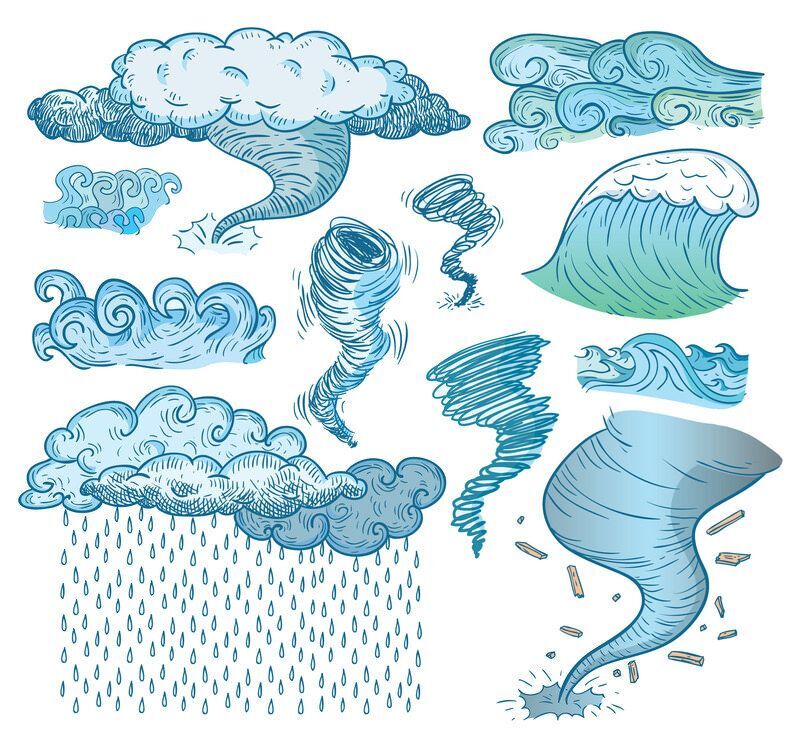© Carlacpdesign | Dreamstime.com - Weather elements, vector illustration
Many who have seen recent media coverage of Southwest England’s gale-lashed coastline, wrecked mainline rail track – our region is currently cut off from London by train – washed out homes and businesses and flooded farmland will interpret the current run of storms as yet further evidence, if any were needed, that extreme weather events are becoming more frequent and severe – and more devastating in their effects.
Are these events linked to man-made climate change? As yet there is no definitive answer, according to climate scientists. Despite a better understanding of the phenomena linked to the storms – a weather chain reaction starting with heavy rain and flooding in Indonesia, causing disturbances in the Pacific jet stream and a ‘polar vortex’ over North America, which in turn has affected the course of the Atlantic jet stream – better models and more research are needed before we can know for sure whether global warming or natural variability, or a mix of both, are implicated. Science is the painstaking accumulation of evidence to support or refute what experience and common sense may be telling us. In this case as in others, science will find the answer.
Which brings us to two new publications from the UK’s Exeter-based Met Office, just up the road – and road it will have to be, for the time being – from Green Ink’s head office. First is A Summary of the Latest Science from the Met Office Hadley Centre 2013. This contains an interesting two-page spread on the causes of extreme weather events, accompanied by the following comment: “Observations suggest that certain types of extremes are changing, and some of these changes can now be linked, in part, to human activity.” This attribution is a welcome one, making it easier to put pressure on policy makers to cut carbon emissions – the source of the problem.
The second publication, AVOID: Key Findings of the AVOIDing Dangerous Climate Change Research Programme, describes a partnership between the Met Office Hadley Centre and three other leading UK climate bodies that is tackling three big questions: what are the characteristics of dangerous climate change? What greenhouse gas emissions pathways will avoid dangerous climate change? And what is the feasibility of such pathways? The answers are given in plain English, with plenty of potent graphics and photos, including one of giant waves lashing an English coastline.
Both publications were written and designed by Green Ink last autumn, before the winter storms began to endanger our electricity and broadband connections. What we’ve experienced here in the Southwest is, for most of us, mere inconvenience compared with the devastation wrought elsewhere in the world, for example in Southeast Asia. Nevertheless, it has come as a frightening example of the severe weather we might expect as a result of climate change and the widespread damage such weather can cause. That heightens the importance of the Met Office Hadley Centre’s new findings and messages and makes us all the more proud of the part we play in communicating them.
“I think you’ve done a really good job on the COP and AVOID brochures. They look beautiful too.”
–Jon Stanford, Senior Writer/Editor, Met Office
← Go back Next page →

